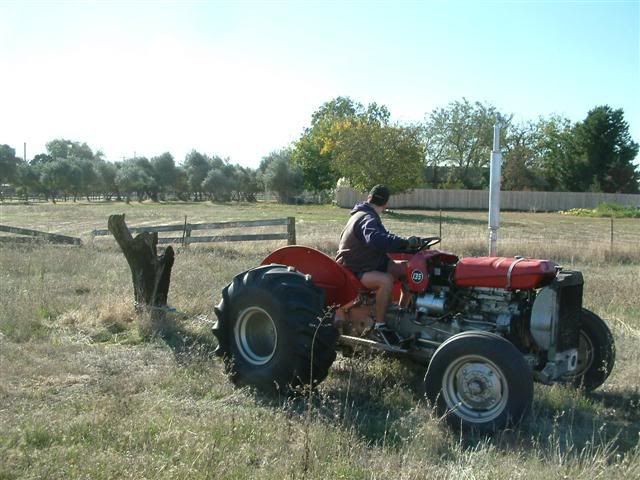Kenfyoozed said:
OK I got the tractor home, all went well with the trip, other than the blow out on the trailer which was fun!

serial number is 9A I89905. Hope you can figure out what i have from that. There seems to be an electrical problem. I had a good deep cycle battery die on me over night while it was in the tractor. Seems grandpa knew there was problem, as most of all the electral wiring to the lights and such have been cut. So what could be draining the battery? Does the key need to be removed ?
Thanks,
Neil
OK, first the serial #. I can tell you what year, but not which exact model. From 1966 on, Massey Ferguson numbered ALL the 100 series models from the same numerical sequence. 135's, 150's, 165's, 175's, and 180's shared the same 9AXXXXXX numbers. Yours is a 1974 model, about 1/3rd of the way through '74 production, so PROBABLY about March through May '74 build date.
To further identify, if there isn't a round "medalion" on the side of the hood identifying the exact model, next question is, 3-cylinder or 4-cylinder? (3 would be 135 or 150, 4 would be one of the bigger models) Obvious difference between the 135 and 150 is the air filter. On a 135 it's near the steering column. On a 150 the filter is behind the "150" medallion on the left front corner of the hood.
Now, the battery discharge issue. On a diesel specifically, no the key doesn't need to be removed when not running. There's a common problem with these tractors that has symptoms simular to yours. The 100 series tractors used an OIL PRESSURE SWITCH to (A) excite the alternator (B) provide power to the gauges, including fuel sending unit/gauge. The switch is directly attached to the under-side of the oil pressure gauge. When it's working correctly, as the oil pressure comes up once the engine is started, the switch completes a circuit that energizes the gauges and sends voltage to the field terminal of the alternator. (1974 models were equipped with alternators and not generators) These tractors use an external voltage regulator and do not have a "sensing wire" connected to the alternator. (typically the 3rd wire in a "3 wire alternator") This arraingment eliminates the problem of alternators not being "excited" at low rpms. They send a charge on to the voltage regulator as soon as the engine starts, even at idle speeds, as soon as there's oil pressure. That oil pressure sensing switch can go bad. NORMALLY, it will simply not complete the circuit. In that case, you won't get a charge from the alternator, nor will the fuel gauge work. In some cases, the oil switch will fail in a closed circuit mode. Then you have a constant discharge situation. Unplug one of the two wires connected to that pressure switch to see if that eleminates your discharge. If so, replace the switch. (Available through TISCO or MF/AGCO) Again, that switch is directly under the oil pressure gauge and will have an oil line (from the engine) connected to the bottom of the switch.
Also check the key switch itself, then start tracing wires....

